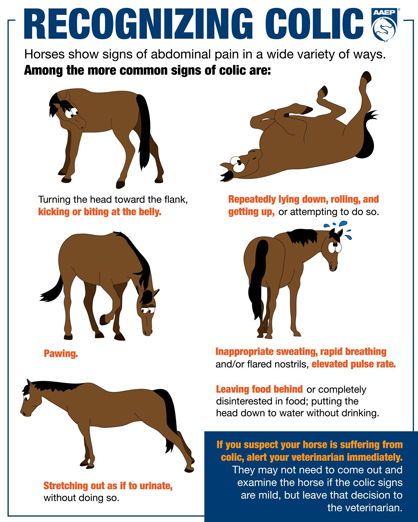Do You Know How to Spot Colic In Horses?

Colic is not a disease; it is merely a symptom of disease. Specifically, colic indicates a painful problem in the horse’s abdomen (belly), which can be caused by a number of different conditions. Less than 10% of all colic cases are severe enough to require surgery or cause the death of the horse; nevertheless, every case of colic should be taken seriously because it can be difficult to tell the mild ones from the potentially serious ones in the early stages.
Horses show signs of abdominal pain in a wide variety of ways, and usually a horse shows only a few of the signs during an episode of colic. The rule of thumb is—the more obvious the signs of pain, the more serious the problem.
If you suspect the horse is suffering from colic, we suggest that you:
- Alert your veterinarian immediately.
- Remove all hay and grain from the horse’s surroundings.
- Don’t medicate without your veterinarian’s approval, as pain medications can mask clinical signs;
- Walk the horse around if it’s continually rolling or in danger of hurting itself—but do not tire the horse with relentless walking and don’t approach the animal if it’s not safe.
- Keep the horse under close observation until the signs of colic resolve or the veterinarian arrives.
The key to increasing the chances of a good outcome is to identify the problem early and get your veterinarian involved from the start. Consult your horse doctor for more information and be sure to ask them how they can be reached if your horse colics after hours!
The AAEP also offers some basic tips for the prevention of colic here: Colic Prevention Tips | AAEP










